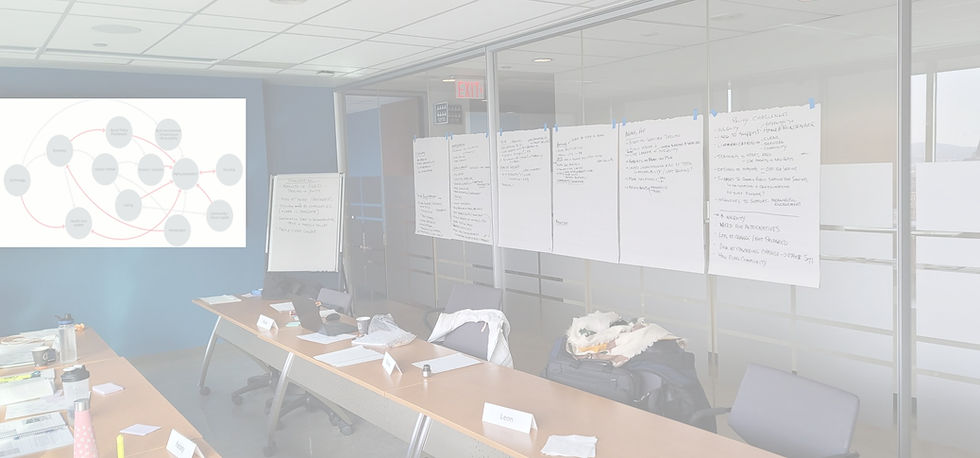Foresight as Rigourous and Systematic Imagining (FARSI) Method
- ppadbury
- Jan 15
- 3 min read
Updated: Mar 12

The insights from cognitive science and decades of experience helping people think about the future shaped my thinking on the original Horizons Foresight Method (which won the Association of Professional Futurists award for Most Significant Futures papers in 2018) as well as the updated Foresight as Rigourous and Systematic Imagining (FARSI) Method.
Overview of the FARSI Method
The FARSI Method puts the participant's mental models of the system at the center of the foresight process. It is designed for very complex public policy problems where there is an expectation that governments will do their best to anticipate emerging challenges and unintended consequences, while acknowledging we cannot predict the future.
Works with those mental models, at every step in the process to explore how the system could evolve and the challenges and opportunities that could emerge.
Provides “scaffolding” and visual tools at every step of the process to help participants share their models and facilitate dialogue.
At the end of the process, leaders and participants have a better understanding of the system, the forces driving change, the ways the system could evolve, the challenges and opportunities that could emerge, visions of preferred futures, strategies to cope with the important uncertainties, and a set of robust planning assumptions to guide policy development and decision- making.
Note: These methods were designed to address very complex public policy problems where the preparation and group process and can take weeks and months to complete.
Steps in the FARSI Method
Where feasible, involve stakeholders, directly or indirectly at each step.
Frame - what the study is about? What question(s) does it answer?
Surface the current assumptions and mental models of key stakeholders that are currently shaping their thinking about the future of the system.
Develop domain map to guide scanning.
Scan to identify trends and weak signals shaping the system.
Develop system map in cooperation with stakeholders.
Identify key change drivers that have a strategically significant impact in shaping the system.
Do cascade and then cross-impact analysis to explore potential 2nd, 3rd, 4th ... order impacts of drivers to understand potential surprises and system disruptors to fertilize the scenarios.
Use the system map to develop system-based scenarios that explore how the system could evolve as the drivers impact it under different conditions / types of system change.
Do guided imaging and dialogue with stakeholders to identify challenges for current policies and institutions across all scenarios.
Discuss, research and/or design a range of potential solutions to the challenges and opportunities to create building blocks that can be combined in different ways to create desirable futures.
With a sense of the possibilities, develop broad design criteria for a desirable future(s). There may be multiple desirable futures.
Explore combining the building blocks in different combinations (a morphological analysis) to build visions of multiple feasible preferred futures that solve the challenges and explore system transformation in an iterative process. This step can be gamified, to generate many options.
Dialogue among stakeholders on the feasible visions to explore the trade-offs they are willing to make and thus identify the building blocks that are most likely to lead to a preferred future.
Use the vision(s) to develop transition strategies to sequence and coordinate system transformation across all relevant subsystems and align stakeholder plans and contributions.
Develop credible planning assumptions to guide shared actions that are robust across all plausible futures and maximize the chance of getting to the preferred future(s).
The outcome is all stakeholders share a robust mental model of the possible futures, potential disruptions / and adaptive responses, as well as a shared vision that guides and aligns actions across the emerging landscape of challenges and opportunities.


Comments